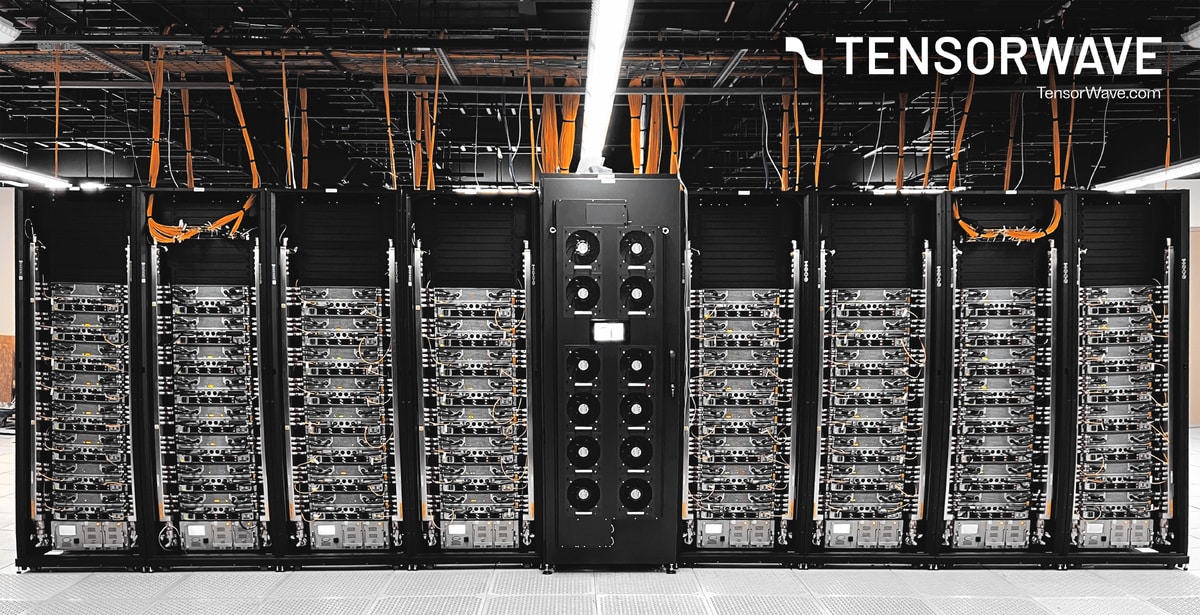Lisa Su-led company accelerates with MI300X, plans a comprehensive ecosystem, and aims to cut into Team Green’s lead.
Since NVIDIA became the undisputed AI leader following the 2022 boom, it seemed like no other manufacturer could compete. However, AMD has begun closing the gap with a more ambitious strategy than ever. Under Lisa Su’s leadership, the company has doubled down on AI, positioning its Instinct MI300X accelerators as a real alternative to NVIDIA’s ubiquitous Hopper chips.
A turning point: from reaction to offense
In 2023, AMD reacted quickly after realizing that the AI revolution was much deeper than expected. Although it entered the race late — when NVIDIA already had agreements with major tech companies and a robust software ecosystem like CUDA — AMD didn’t give up. Instead of competing solely with hardware, it started designing a comprehensive infrastructure capable of rivaling NVIDIA’s closed ecosystem, which has made it the industry’s “default choice.”
The Instinct MI300X, based on the CDNA 3 architecture, promises twice the memory capacity of the H100, competitive bandwidth, and standout performance especially in inference tasks. Additionally, AMD has maintained prices between 20% and 30% lower than its main rival, which has been key in attracting clients like Microsoft and OpenAI.
Ecosystem and Helios servers: the new full-rack strategy
But Lisa Su isn’t satisfied with just having good chips. AMD’s vision involves scaling toward complete infrastructure solutions, like its upcoming Helios line — AI servers that integrate MI300X accelerators with EPYC Venice CPUs in a full-rack setup, designed to directly compete with NVIDIA’s Rubin NVL144 systems.
This move is strategic: the AI market isn’t just about selling chips but offering ready-to-deploy environments, with tools, APIs, libraries, and support for large-scale distributed workloads. This is exactly where AMD is building its alternative to the CUDA ecosystem, aiming to lower switching costs for big tech companies and democratize access to high-performance AI infrastructure.
Next-generation: MI400 with HBM4 memory and a 2026 outlook
At its “Advancing AI” event, AMD also revealed parts of its future roadmap: the Instinct MI400, scheduled for upcoming years, will feature HBM4 memory and deliver up to 50% more capacity than current models. This positions them as the company’s most ambitious accelerators and anticipates fierce competition with NVIDIA’s forthcoming Rubin architecture.
Moreover, AMD showcased its commitment to large-scale deployments with future Venice, Verano, and Turin servers, designed for AI workloads, big data, and cloud computing, consolidating a complete horizontal infrastructure — from silicon to rack.
The challenge of competing against a de facto monopoly
Despite these advances, AMD continues fighting not just a rival but a market dominated by inertia. NVIDIA not only holds the most coveted chips but also benefits from media narratives and investor favor, viewing their products as success guarantees. In this context, announcing an AMD-powered chip purchase still seems like a secondary or less prestigious choice — something Lisa Su’s firm will need to change if it wants to compete on equal footing.
Coexistence or confrontation?
The key isn’t to completely overthrow NVIDIA but to create real competition. AMD doesn’t need to replace Team Green but coexist on equal terms — as it already does in the gaming GPU segment. If it can solidify its AI infrastructure with good performance, availability, and strong software, it can position itself as an open, efficient, and cost-effective alternative in a market beginning to demand greater diversity.
Tomorrow, AMD will release its second-quarter financial results, where a year-over-year increase driven by AI demand is expected. This will be a crucial moment to see whether Su’s strategy is working — or if the gap with NVIDIA remains insurmountable.

